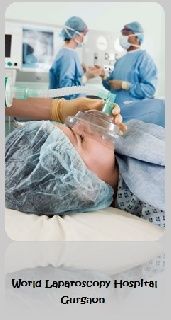La hipotensión prolongada durante la cirugía laparoscópica es arriesgada
The entire time patients in Minimal Access surgery commit to low blood pressure level might be a stronger predictor of serious postoperative complications as opposed to depth of the hypotensive troughs they hit throughout the procedure. The goal of the Safe Laparoscopic Surgery Saves Lives Challenge is to improve the safety of minimal access surgical care around the world by ensuring adherence to proven standards of care in all countries. The WHO Surgical Safety Checklist has improved compliance with standards and decreased complications from laparoscopic surgery in pilot hospitals where is was evaluated. Depending upon the final results of such validation steps, the research of Cleveland Clinic in Ohio, anticipate an evolutionary practice change if not every, but many patients outcomes could be improved by minimizing hypotensive exposures. The investigators used logistic regression to discover the relationship between cumulative time spent beneath the various thresholds and 30-day mortality. Several factors independently affected patient outcomes after surgery. Such as patient age, Charlson comorbidity index and cumulative blood loss. There would be a 20% rise in mortality for each additional comorbidity and every additional 20 years old enough greater than doubled a patient’s risk for dying within 30 days of surgery.
However the most striking finding involved the cumulative timeframe spent below various blood pressure levels thresholds, It has been found that as patients started spending even just a few minutes below an MAP of 55, there was a clear, crisp rise in the percentages ratio for mortality. Most importantly, similar increases in mortality were seen whenever patients exceeded other, longer exposure limits for time spent below one of the less severely hypotensive MAP thresholds. Indeed, as each additional exposure limit was exceeded, there was an incremental 4% to 7% surge in the risk for 30-day mortality. What’s most disconcerting is always that a number of our patients routinely exceeded a lot of these exposure limits by spending substantial amounts of time below their respective MAP thresholds, on the order of around 30 minutes or longer in most cases.
These results claim that long-term outcome may well not basically be suffering from periods of severe hypotension, and also by long periods spent at seemingly adequate intraoperative hypertension. “Unlike conventional vital sign monitors-which alert only to blood pressure dropping below a certain threshold level-decision support systems can tuned in to a particular a higher level risk owing to significant cumulative hypotensive exposure, something apparently very critical yet difficult for humans to help keep an eye on, unlike the detection associated with a sudden changes in blood pressure. The idea is that when the anesthesia care team receives any first alerts to excessive hypotensive exposure, it may be able to adjust the anesthetic so how the patient’s mean arterial pressure trends higher. One can choose how aggressive one wants to be around minimizing hypotension in accordance with what amount of attributable risk one might choose to attempt to mitigate.
Top
However the most striking finding involved the cumulative timeframe spent below various blood pressure levels thresholds, It has been found that as patients started spending even just a few minutes below an MAP of 55, there was a clear, crisp rise in the percentages ratio for mortality. Most importantly, similar increases in mortality were seen whenever patients exceeded other, longer exposure limits for time spent below one of the less severely hypotensive MAP thresholds. Indeed, as each additional exposure limit was exceeded, there was an incremental 4% to 7% surge in the risk for 30-day mortality. What’s most disconcerting is always that a number of our patients routinely exceeded a lot of these exposure limits by spending substantial amounts of time below their respective MAP thresholds, on the order of around 30 minutes or longer in most cases.
These results claim that long-term outcome may well not basically be suffering from periods of severe hypotension, and also by long periods spent at seemingly adequate intraoperative hypertension. “Unlike conventional vital sign monitors-which alert only to blood pressure dropping below a certain threshold level-decision support systems can tuned in to a particular a higher level risk owing to significant cumulative hypotensive exposure, something apparently very critical yet difficult for humans to help keep an eye on, unlike the detection associated with a sudden changes in blood pressure. The idea is that when the anesthesia care team receives any first alerts to excessive hypotensive exposure, it may be able to adjust the anesthetic so how the patient’s mean arterial pressure trends higher. One can choose how aggressive one wants to be around minimizing hypotension in accordance with what amount of attributable risk one might choose to attempt to mitigate.






